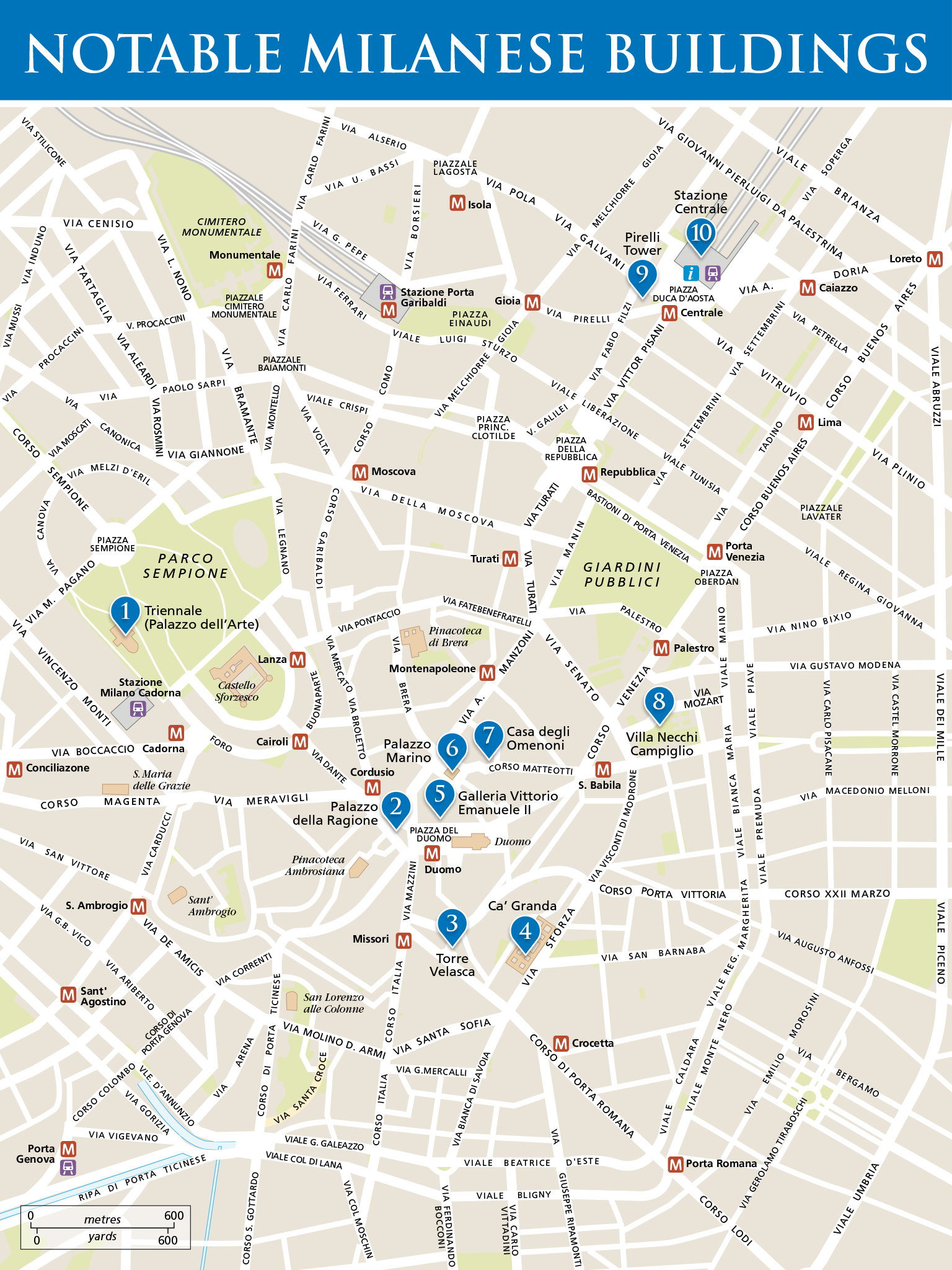
Notable Milanese Buildings
1. Triennale (Palazzo dell’Arte)
On the outskirts of Parco Sempione, the Triennale houses Italy’s first Design Museum, regular design and architecture exhibitions and an excellent decorative arts bookshop. The DesignCafé is worth a visit.
2. Palazzo della Ragione
The arcade that takes up the ground level of this Lombard Romanesque palace, built in 1228–33 (the top floor dates from 1771), once hosted the city’s main market. The relief on the façade depicts the 13th-century mayor Oldrado da Tresseno on horseback. Inside, the Salone dei Giudici has its original frescoes (for further details see Palazzo della Ragione).
3. Torre Velasca
When Nathan Rogers, Lodovico Belgioioso and Enrico Peressutti constructed this brick-red, 106-m (348-ft) tower block in 1956–8, they showcased their post-war engineering talents by extending the top nine floors beyond the lower ones on struts, much like an oversized medieval tower. Unfortunately, the maintenance costs have proved to be horrendous (for further details see Torre Velasca).
4. Ca’ Granda
In 1456 Francesco Sforza instituted one of his greatest public works, a massive hospital with separate wings for women and men, each based around four courtyards. The vast central Cortile Maggiore was added in the 17th century, along with the Annunciazione church with its Guercino altarpiece. The Neo-Classical men’s wing was eventually completed in 1804, but the entire hospital moved elsewhere in 1939, to be replaced by the University of Milan in 1958 (for further details see Ca’ Grande).
5. Galleria Vittorio Emanuele II
High-class Italian elegance came to terms with the Industrial Age in such marvels of engineering as this four-storey shopping arcade roofed with a steel-and-glass canopy. It was built in 1864–8 by Giuseppe Mengoni, who fell to his death from its scaffolding just days before the King arrived to open the galleria and lend it his name (for further details see Galleria Vittorio Emanuele II).
6. Palazzo Marino
Milan’s comune (city hall) has two distinct façades: a 1553 Mannerist one on Piazza S Fedele, and an 1886–92 Neo-Classical one facing La Scala theatre. The former was built by Galeazzo Alessi (who also designed the lovely main courtyard) in 1558; the latter dates to 1860 (for further details see Palazzo Marino).
7. Casa degli Omenoni
Renaissance sculptor Leone Leoni, whose works grace Milan’s Duomo and Madrid’s El Escorial, built this palazzo in 1565, lining the lower level of the façade with eight giant telamones – columns in the form of a male figure (for further details see Casa degli Omenoni).
8. Villa Necchi Campiglio
This perfectly preserved and restored 1930s villa has technology revolutionary for its time, including a heated pool and an internal phone system, testimony to the elegant Milanese interwar lifestyle. It houses two important art collections: one of early 20th-century works; the other of 18th-century decorative arts (for further details see Villa Necchio Campiglio).
9. Pirelli Tower
Milan once had a rule about structures rising no higher than the golden Madonnina atop the Duomo. The 127.1-m (417-ft) Pirelli Tower – designed in 1955–60 by a team headed by Giò Ponti and including Pier Luigi Nervi – broke that tradition, but placed a replica of the Madonnina on its own roof so she would still have the highest vantage point in Milan. It now houses Lombardy’s regional government and in 2002 survived being struck by a small plane.
10. Stazione Centrale
Milan’s massive railway station is often considered a remarkable example of Fascist-era architecture, though its design (of 1912) predates this period and owes more to the Liberty style. Finally completed in 1931, the station is caked in gleaming white Aurisina stone and decorated with reliefs, statues and murals too often overlooked. Piazza Duca D’Aosta
Piazza Duca D’Aosta


